SAINT+

论文地址:SAINT+: Integrating Temporal Features for EdNet Correctness Prediction
Introduction
本文是 [[SAINT]] 的升级版, 在其基础上增加了时间特征,在 EdNet 取得了当前的SOTA。
Details
核心介绍时间信息的编码
Temporal Feature Embeddings

- Elapsed Time: Elapsed time is an amount of time that a student spent on solving a given exercise. 提出两种编码的方式
- continuous embedding:a latent embedding vector for an elapsed time $et$ is computed as $v_{\text {et }}=\text { et } \cdot w_{\text {elapsed_time}}$, where $w_{\text {elapsed_time}}$ a single learnable vector.
- categorical embedding: unique latent vectors are assigned to each integer seconds. We set the maximum elapsed time as 300 seconds and any time more than that is capped off to 300 seconds.
- Lag Time : Lag time is the time gap between interactions.
模型整体的架构如下
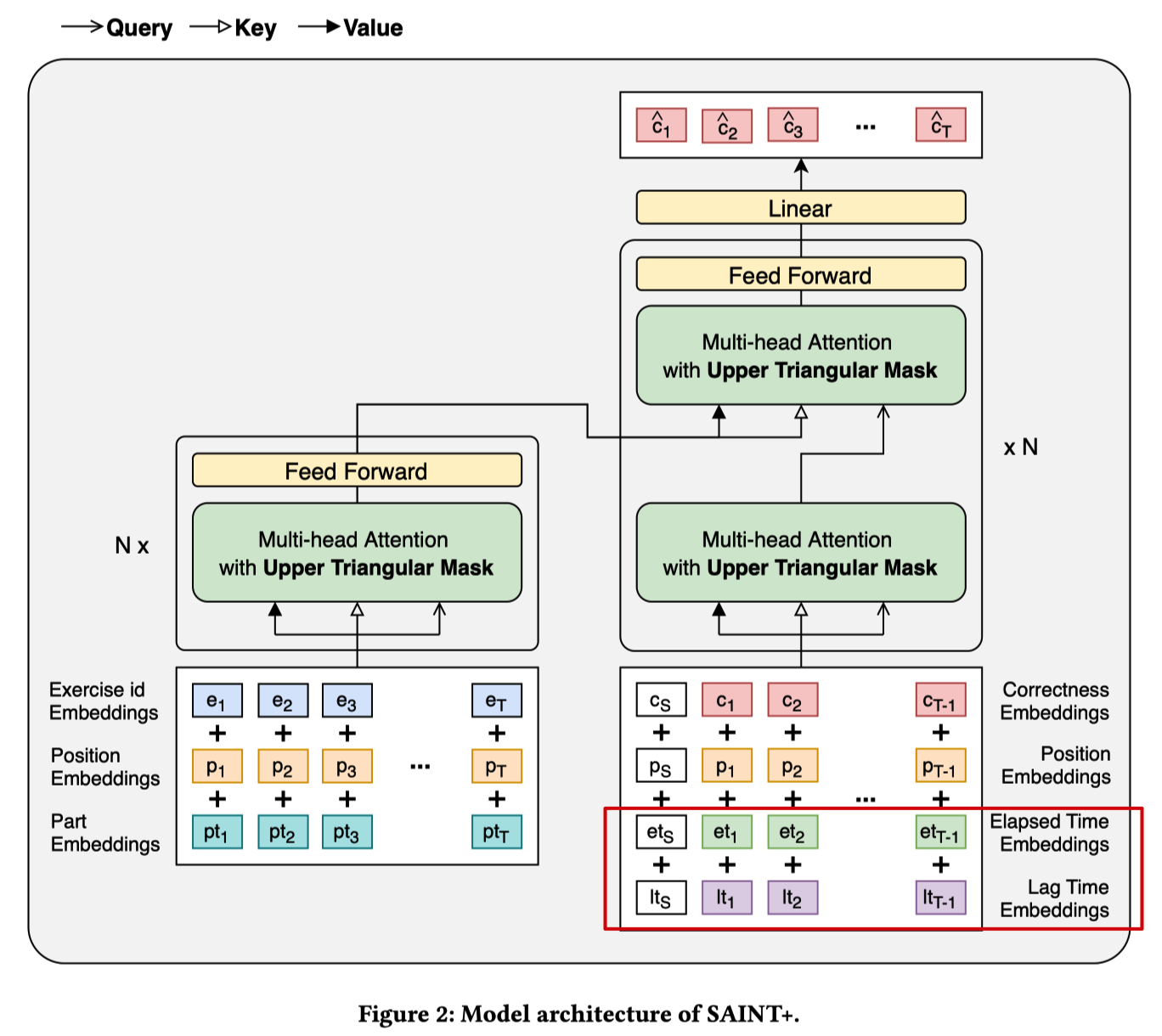
把时间特征的 embedding 直接加到输入中即可。
Result
时间特征的分布
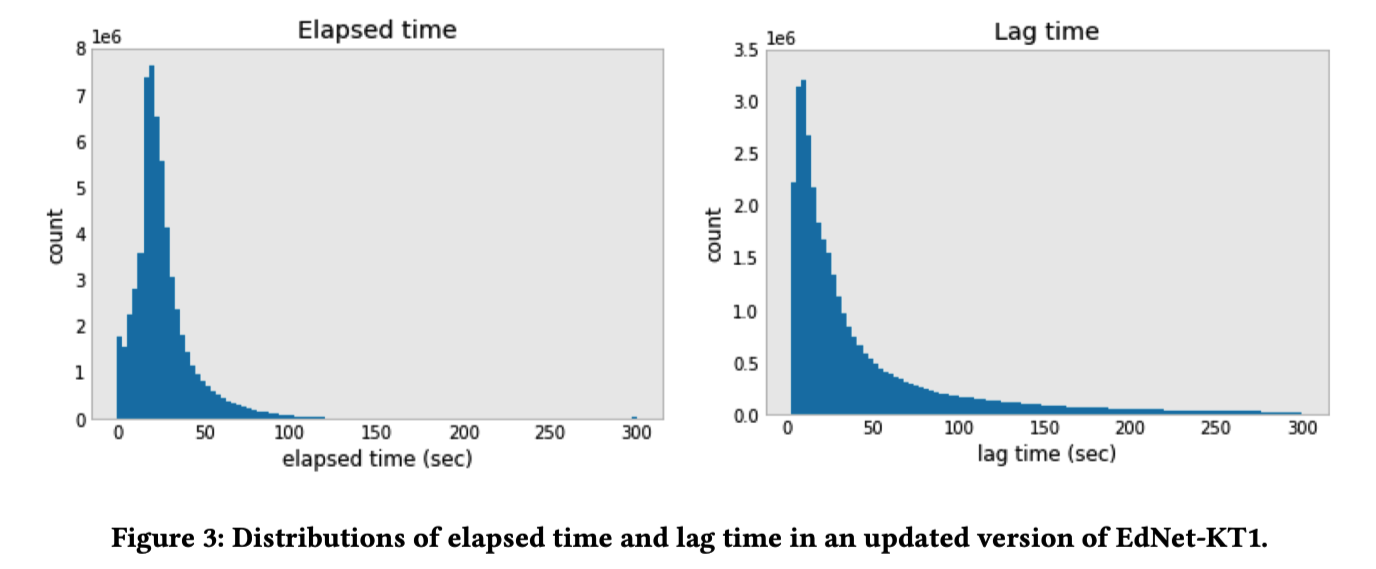
实验结果如下,ACC 和 AUC 均提升1个点左右
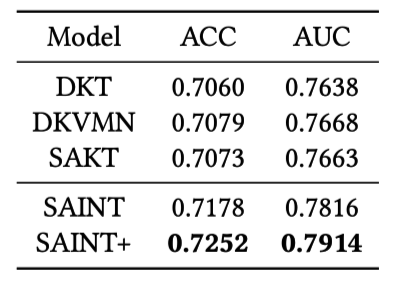
实验设置的关注的几点
- We pick the weight with the best validation AUC and evaluate them on the test set。
- SAINT+ and SAINT 给定了具体参数。
- 其它的 baselines,利用超参搜索,报告在test上最好的结果(the best results are reported on the test dataset)。
消融实验
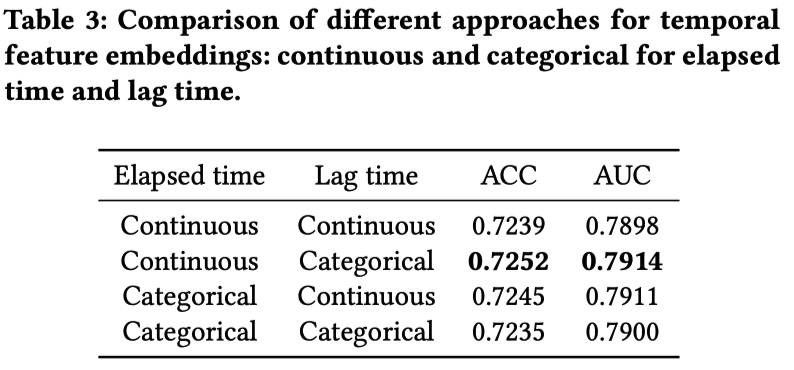
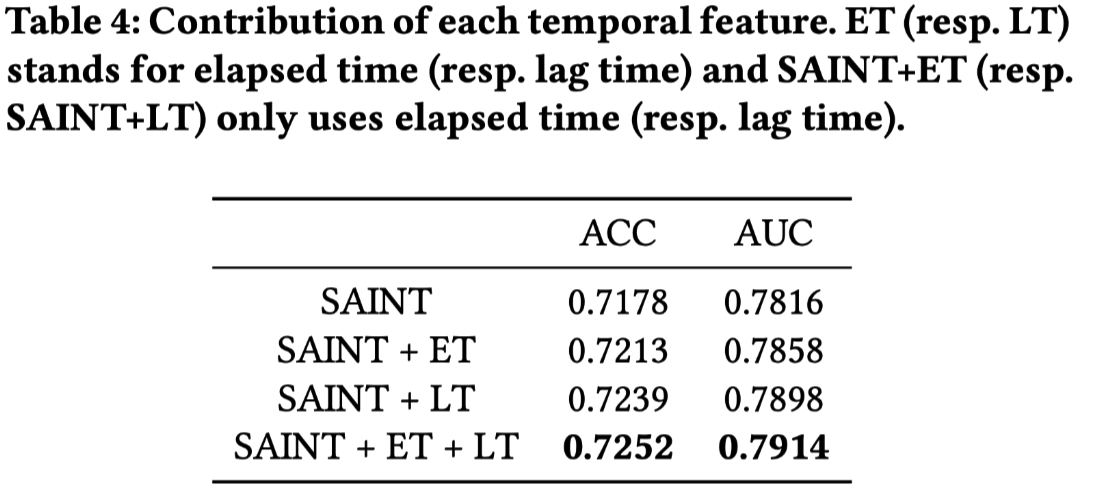
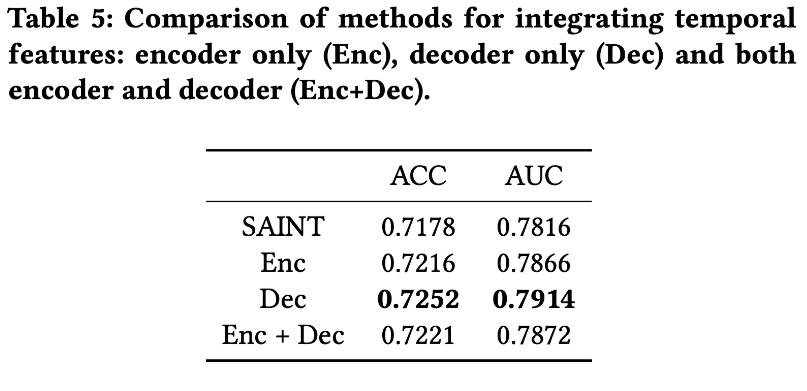
Conclusion
本文提供了加入时间特征方法,这点值得借鉴,关于实验部分论文也写的很清晰,值得一读。